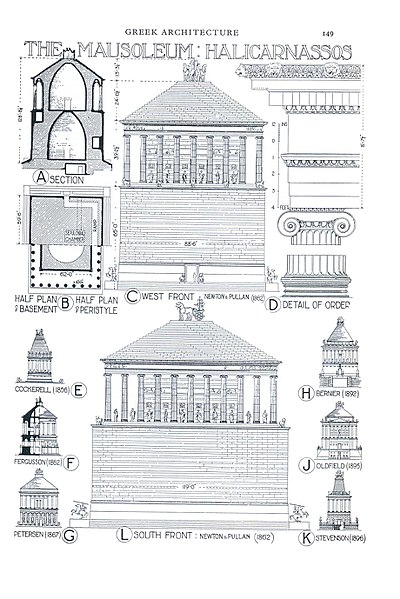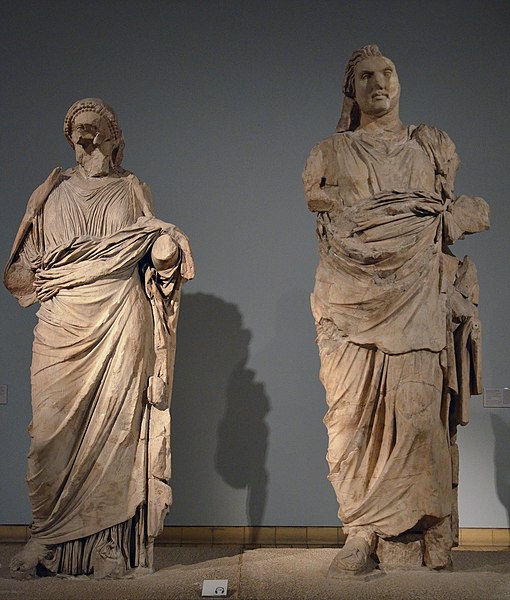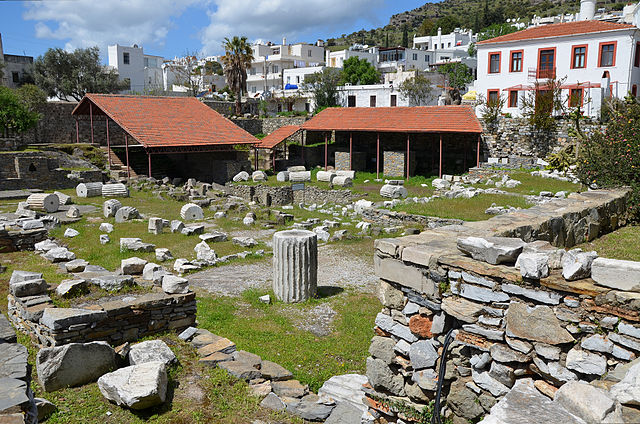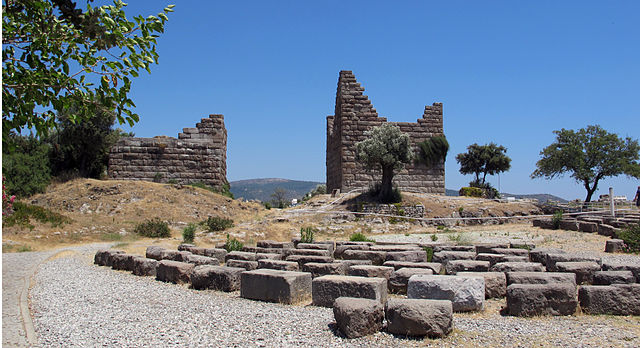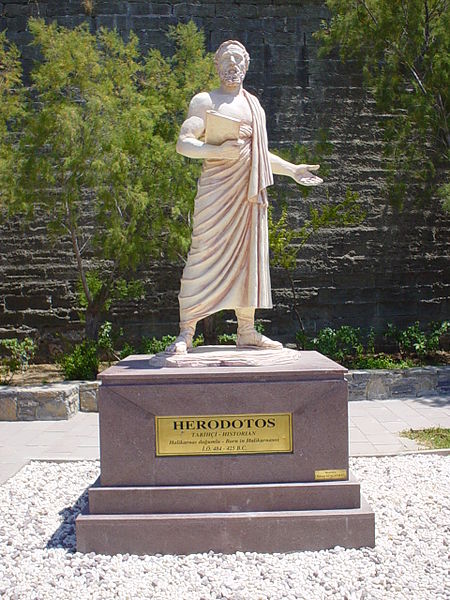Mausoleum at Halicarnassus
The Mausoleum at Halicarnassus or Tomb of Mausolus was a tomb built between 353 and 350 BC in Halicarnassus for Mausolus, an Anatolian from Caria and a satrap in the Achaemenid Empire, and his sister-wife Artemisia II of Caria. The structure was designed by the Greek architects Satyros and Pythius of Priene. Its elevated tomb structure is derived from the tombs of neighbouring Lycia, a territory Mausolus had invaded and annexed c. 360 BC, such as the Nereid Monument.
Model of the Mausoleum at Halicarnassus, at the Bodrum Museum of Underwater Archaeology.
Mausolus (casting from the Pushkin Museum).
Reconstitutions of the Mausoleum at Halicarnassus.
Colossal statues of a man and a woman from the Mausoleum at Halicarnassus, traditionally identified as Mausolos and Artemisia II, around 350 BC, British Museum.
Halicarnassus was an ancient Greek city in Caria, in Anatolia. It was located in southwest Caria, on an advantageous site on the Gulf of Gökova, which is now in Bodrum, Turkey. The city was famous for the Mausoleum of Halicarnassus, also known simply as the Tomb of Mausolus, whose name provided the origin of the word "mausoleum". The mausoleum, built from 353 to 350 BC, ranked as one of the seven wonders of the ancient world.
The ruins of the Mausoleum at Halicarnassus, one of the Seven Wonders of the Ancient World.
Relief of an Amazonomachy from the Mausoleum at Halicarnassus.
Myndos Gate. Ruins of the fortifications of Halicarnassus (modern Bodrum); 4th c. BC;
Herodotus (Greek: Ἡρόδοτος) is honored with a statue in his home of Halicarnassus (modern Bodrum).



